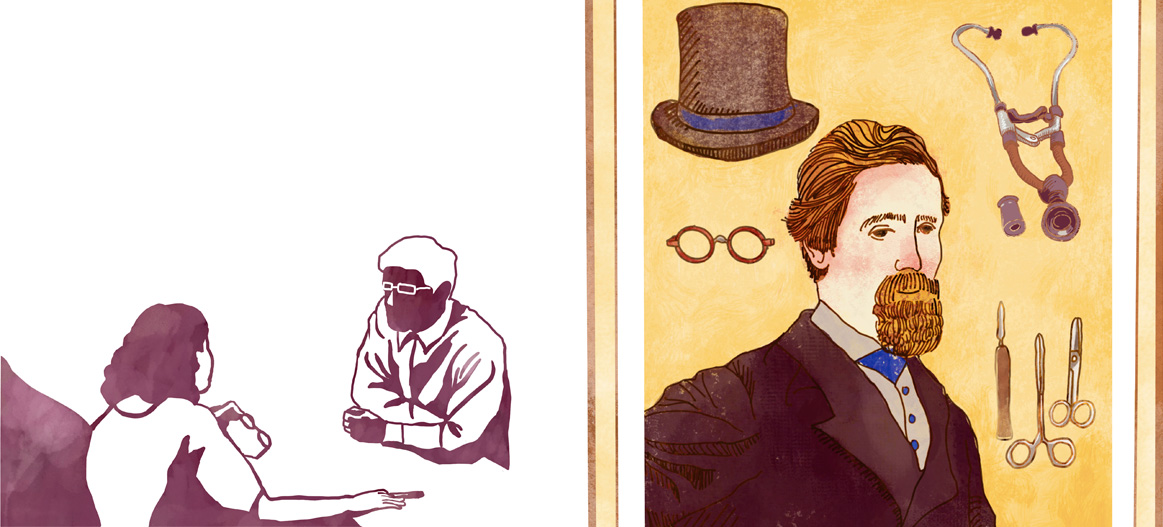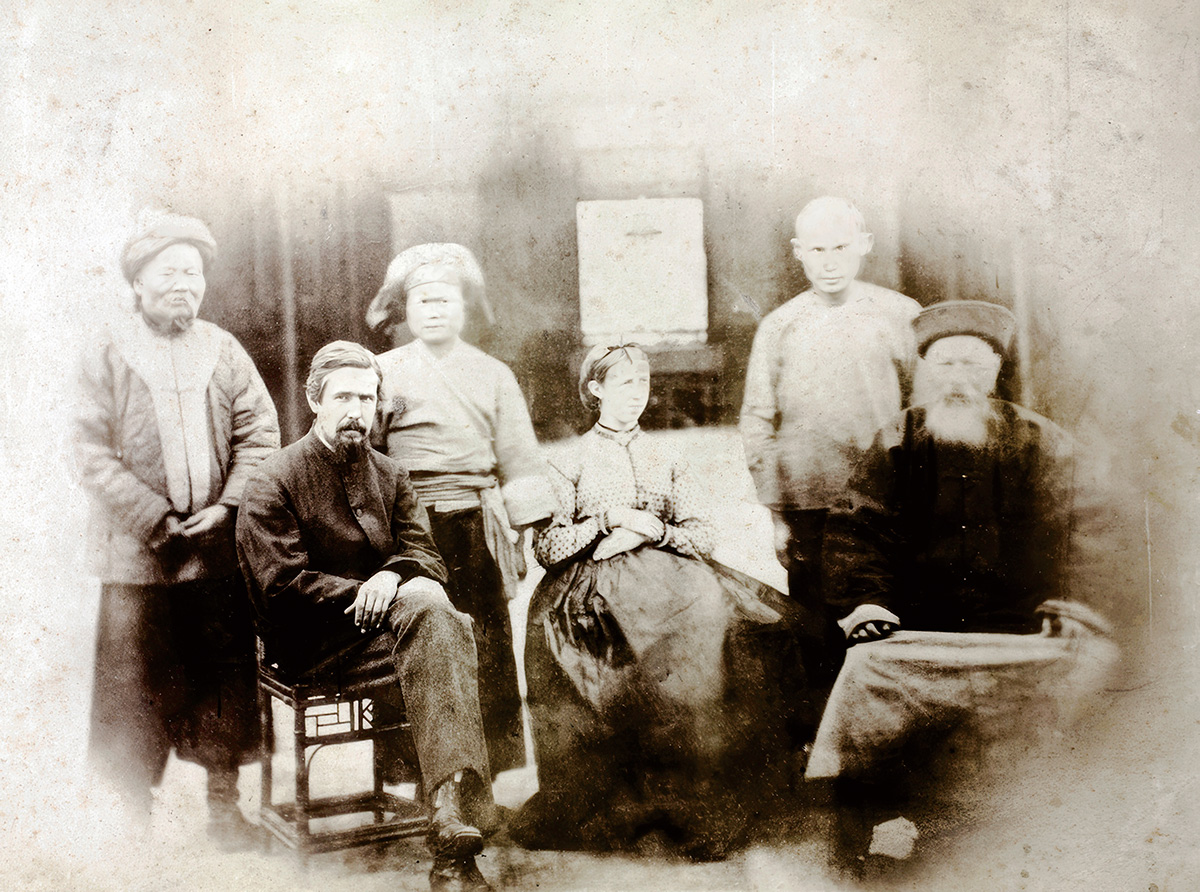
James Laidlaw Maxwell – The First Protestant Missionary to Taiwan【Parent-Child Reading Guide】
點閱次數:387
In 1858, young James Laidlaw Maxwell graduated with distinction from Edinburgh Medical School in Scotland. In the same year, Formosa (now Taiwan) was open to foreign trade and mission work under the Treaty of Tientsin. Maxwell probably never thought that he would leave for distant Taiwan to work as a medical missionary.
Devoted Oneself to God’s Calling
During Maxwell’s service in Birmingham General Hospital, he heard one day about the lack of missionaries in China from Carstairs Douglas in a church. Maxwell felt that God was calling him, so he responded with a sincere heart, saying, “I am willing to be sent.”
In August 1863, Maxwell was sent as the first missionary to be stationed in Taiwan by the Foreign Mission of the Presbyterian Church in England. He traveled across the ocean with Douglas for more than three months, covering more than half of the globe, and arrived in Shanghai in early December.
In early January of the following year, Maxwell went to Amoy. He learned the Amoy language and worked as a medical missionary to prepare himself for the mission to Taiwan. In October, he explored Takao (now portside Kaohsiung), Taiwan-Fu proper (now Tainan), and Pi-thâu (now Fengshan) with Douglas and three other lay persons. They went back to Amoy after two weeks.
In late May of 1865, Maxwell had been away from his home country for one year and ten months and had prepared well for the mission. The time to do mission in Taiwan finally came, and he set sail for Takao with Douglas, accompanied by three assistants: Chen Tzu-Lu, Huang Chia-Chih, Wu Wen-Shui.
Realizing God’s Good Will Through Difficulties
Maxwell decided to stay in Taiwan-Fu proper, which was then the administrative and commercial center of Taiwan, with a population of twenty thousand. On June 16, 1865, they rented a place on Khòaⁿ-sai Street and used its front as a chapel and the back as a clinic. People flocked to his free and skillful treatment. However, some locals envied him and spread rumors about him murdering people and collecting their brains to produce opium. The fake news enraged many who were already hostile to foreigners, who were able to come to Taiwan owing in part to military power. Some of the locals cursed and threw rocks at Maxwell and his colleagues whenever they appeared in public. A few days later, a mob surrounded the clinic, making loud noises and threatening to tear down the chapel. The officials intervened to disperse the crowd, but they also expelled Maxwell and his colleagues. The missionaries were given three days to leave Taiwan-Fu. After praying about it, they decided to move to Kî-āu (now Chichin) for the protection of the British Consulate.
Years later, Maxwell felt thankful when recalling the incident. Kî-āu’s smaller population was more suitable for him as a newcomer to carefully attend each patient’s body and mind. He realized that the setback was God’s good will as well.
Opening the Kî-āu Clinic in Takao
Maxwell searched for a place in Kî-āu to treat patients and spread the Good News. In December 1865, he rented a building to use as chapel and clinic. This laid the foundation of “Yeh Su Sheng Chiao" (now Presbyterian Church in Taiwan).
In mid-August 1866, Rev. William Sutherland Swanson baptized four persons: Chen Chi, Chen Ching-Ho, Kao Chang, and Chen Wei. They were the first fruits of the Presbyterian Church in Taiwan.
In spring 1867, Rev. Leonard William Kip of the Reformed Church in America came through Amoy to assist in the baptismal rites. After more than one year, a total of nine individuals were baptized. The growth of Maxwell’s mission was slow but steady.
Exploring Siraya Tribal Areas
In the fall of the year Maxwell arrived in Kî-āu, William A. Pickering went to explore northeast Taiwan-Fu in Maxwell’s company. They visited Sin-chhī, Kong-á-nâ, King-chio-kha, and Rauron. The Siraya, one of the Plains aboriginal tribes, expressed their hospitality by treating them to chicken and pork and calling them their “red-haired relatives.” It was because the elders had retained favorable memories of the ancient Dutch colonizers, who did not mistreat them as the Han people had. The encounter opened the opportunity for Maxwell’s later mission work in the region.
A Year Overshadowed by Dark Clouds
1868 was a year overshadowed by dark clouds, as missionary work was hindered by the rising hostility of Taiwanese people toward foreigners. Early that year, camphor purchased by Pickering, then a staff member of Elles & Co., was seized by a coastal guard official. This incident escalated into what became known as the Camphor Conflict. Also, Christians got mired in conflicts with non-Christians in Pi-thâu and Taiwan-Fu. Church members were persecuted. Pastor Kao Chang was attacked by a mob, being accused of converting a woman with sorcery. He sought help from the authorities but was imprisoned for 49 days; the church in Pi-thâu was looted by the locals.
Maxwell pleaded with the consul to save Kao Chang. One thing led to another until the British Envoy to the Ching Court, Rutherford Alcock, had to formally address the issue. The British consul John Gibson requested that warships be deployed at Takao and Anping to put pressure on the Ching government. On November 25, British warships fired in a demonstration of power, forcing the signing of nine treaty articles between Ching and the United Kingdom, including those for opening the camphor trade, prohibiting vilifications of Christianity, and acknowledging the rights of missionaries to work and reside in Taiwan.
The 'warship diplomacy' brought safety to missionaries. Maxwell seized the opportunity to return to Taiwan-Fu in late 1868. He assigned his mission work in Takao to Rev. Hugh Ritchie, who had arrived in Taiwan in 1867. In addition, he invited Dr. Patrick Manson, who was working for the Takao Custom, to help treat patients.
Maxwell made Taiwan-Fu his base and had good success in evangelizing Kong-á-nâ, Chó-tìn, and Ba̍k-sa, where the Siraya people resided. He was an excellent doctor, skilled in cataract surgeries and cesarean sections. Those who came because of his reputation were cured and heard about the Good News. Many believed in Jesus Christ because of the treatments they received.
Maxwell and His Colleagues
After Ritchie came as the first minister sent to Taiwan by Presbyterian Church in England, the need to invite ministers from Amoy to conduct baptismal rites no longer existed. Maxwell, Ritchie, and local pastors formed a multiracial team to spread the Good News.
In October 1871, Maxwell and his wife returned to Britain for debriefing. However, they could not revisit Taiwan due to health issues. Maxwell remained concerned about the mission work in Taiwan. In 1873 and 1884, he supervised the publication of the New and Old Testaments, respectively, in Amoy Pe̍h-ōe-jī.

Left to right: Thih, Dr. Maxwell, Niû-á, Mrs Maxwell, Ngó-á, Wu Wen-Shui.
A Doctor’s Family that Spread the Good News
Maxwell had been engaged to Mary Anne Goodall long before he left Britain. During his third year in Taiwan, Mary Anne married him in March 1868, and they went to Taiwan-Fu together.
Mary Anne opened a Pe̍h-ōe-jī school to teach women and children how to read and study the Bible. Both of their sons, John P. Maxwell and James L. Maxwell, Jr., followed Maxwell’s career in becoming medical missionaries. John went to China; James began serving at Sin-lâu Hospital, Tainan, in 1901. The entire family dedicated themselves to the Christian faith and demonstrated selfless love.
Maxwell stayed in Taiwan for about eight years as the first, pioneering medical missionary in the country. Today, the Thài-pêng-kéng Maxwell Memorial Church in Tainan stands as a reminder for us to commemorate him and understand why he came to Taiwan.